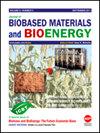Effectiveness of Polyphenolic Acid Derived from Salvia miltiorrhiza on Injection Combined with Systematic Rehabilitation Nursing for Patients with Ischemic Stroke
IF 0.5
4区 医学
引用次数: 0
Abstract
Ischemic stroke, a prevalent cerebral circulation disorder, often leads to profound physical and cognitive impairments, necessitating effective rehabilitation strategies. This study encompassed 110 diagnosed ischemic stroke patients treated at our neurology department from August 2019 to December 2021. Patients were randomly allocated into control and observation groups. The former received standard treatment and nursing care, while the latter underwent a combined regimen of salvianolic acids and systematic rehabilitation. Cell culture experiments exhibited heightened cell viability and reduced LDH secretion in the salvianolic acid-treated oxygen-glucose deprivation/reperfusion (OGD/R) injury model. Immunoblotting revealed elevated TGF-β1 protein expression in salvianolic acid-treated cells compared to controls. The observation group demonstrated lower NIHSS scores and improved emotional state relative to the conventional group. Moreover, the observation group exhibited significantly enhanced Barthel Index, cognitive function, and self-efficacy scores (P <0.05). These findings suggest a positive impact of the intervention on these parameters. In ischemic stroke patients, Salvia miltiorrhiza Bunge, a natural herbal remedy rich in salvianolic acids, exerts therapeutic effects through multiple pathways. The amalgamation of Salvia miltiorrhiza polyphenolic acid injection and systematic rehabilitation presents a favorable prospect for enhancing neurological recuperation, self-care capacity, self-efficacy, and patient convalescence. Therefore, Danggui injections hold potential as a clinical intervention for ischemic stroke management.丹参中提取的多酚酸对缺血性脑卒中患者注射联合系统康复护理的疗效
缺血性中风是一种常见的脑循环障碍,经常导致严重的身体和认知障碍,需要有效的康复策略。本研究纳入了2019年8月至2021年12月在我院神经内科治疗的110例诊断为缺血性卒中的患者。患者随机分为对照组和观察组。前者接受标准治疗和护理,而后者则接受丹酚酸和系统康复的联合治疗方案。在丹酚酸处理的氧-葡萄糖剥夺/再灌注(OGD/R)损伤模型中,细胞培养实验显示细胞活力增强,LDH分泌减少。免疫印迹显示,与对照组相比,丹酚酸处理的细胞中TGF-β1蛋白表达升高。观察组NIHSS评分较常规组低,情绪状态较常规组改善。观察组患者Barthel指数、认知功能、自我效能评分均显著提高(P <0.05)。这些发现表明干预对这些参数有积极的影响。丹参是一种富含丹酚酸的天然草药,对缺血性脑卒中患者可通过多种途径发挥疗效。丹参多酚酸注射液与系统康复相结合,在增强神经系统康复、自理能力、自我效能和患者康复方面具有良好的前景。因此,当归注射剂具有作为缺血性脑卒中治疗的临床干预手段的潜力。
本文章由计算机程序翻译,如有差异,请以英文原文为准。
求助全文
约1分钟内获得全文
求助全文

 求助内容:
求助内容: 应助结果提醒方式:
应助结果提醒方式:


